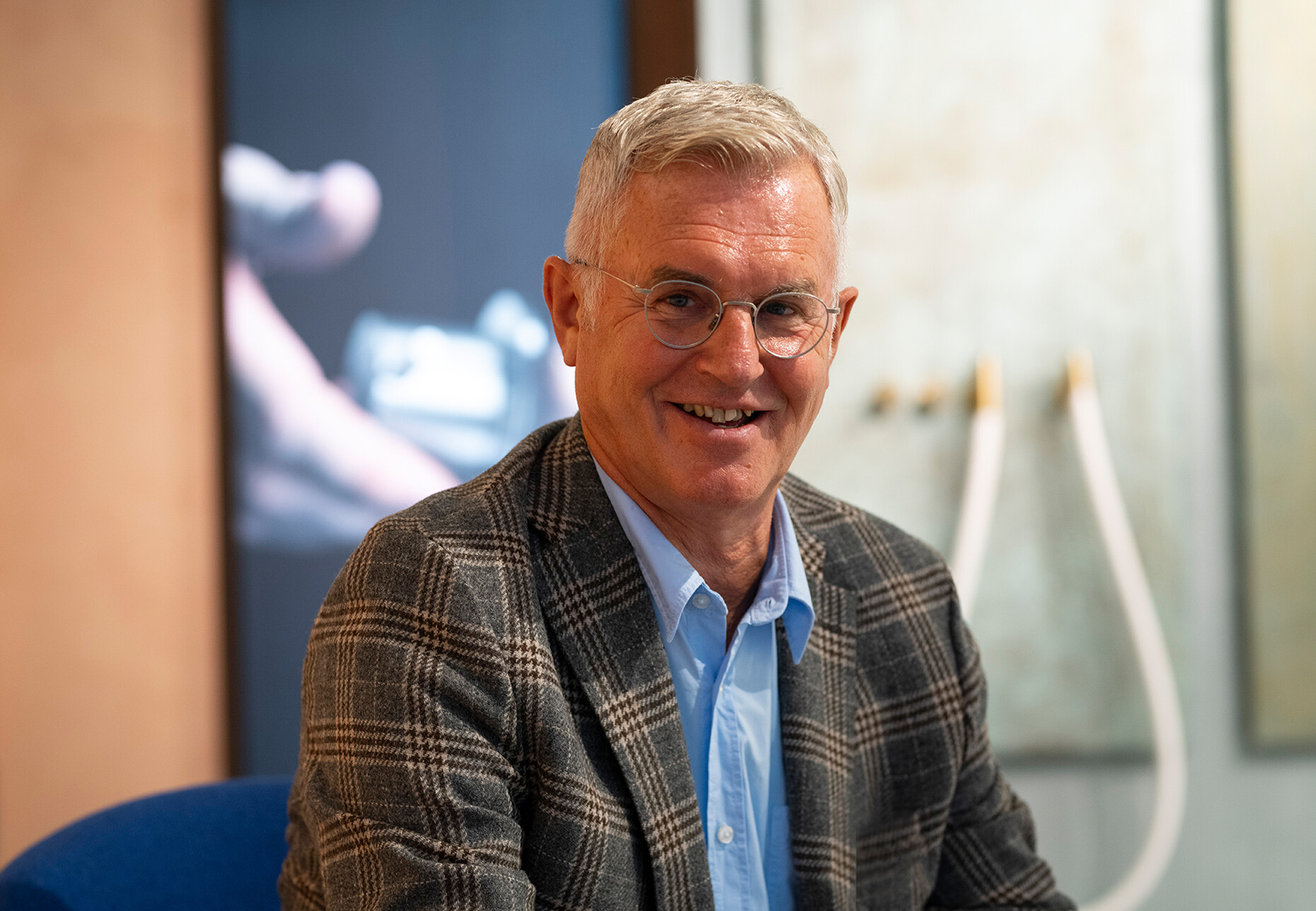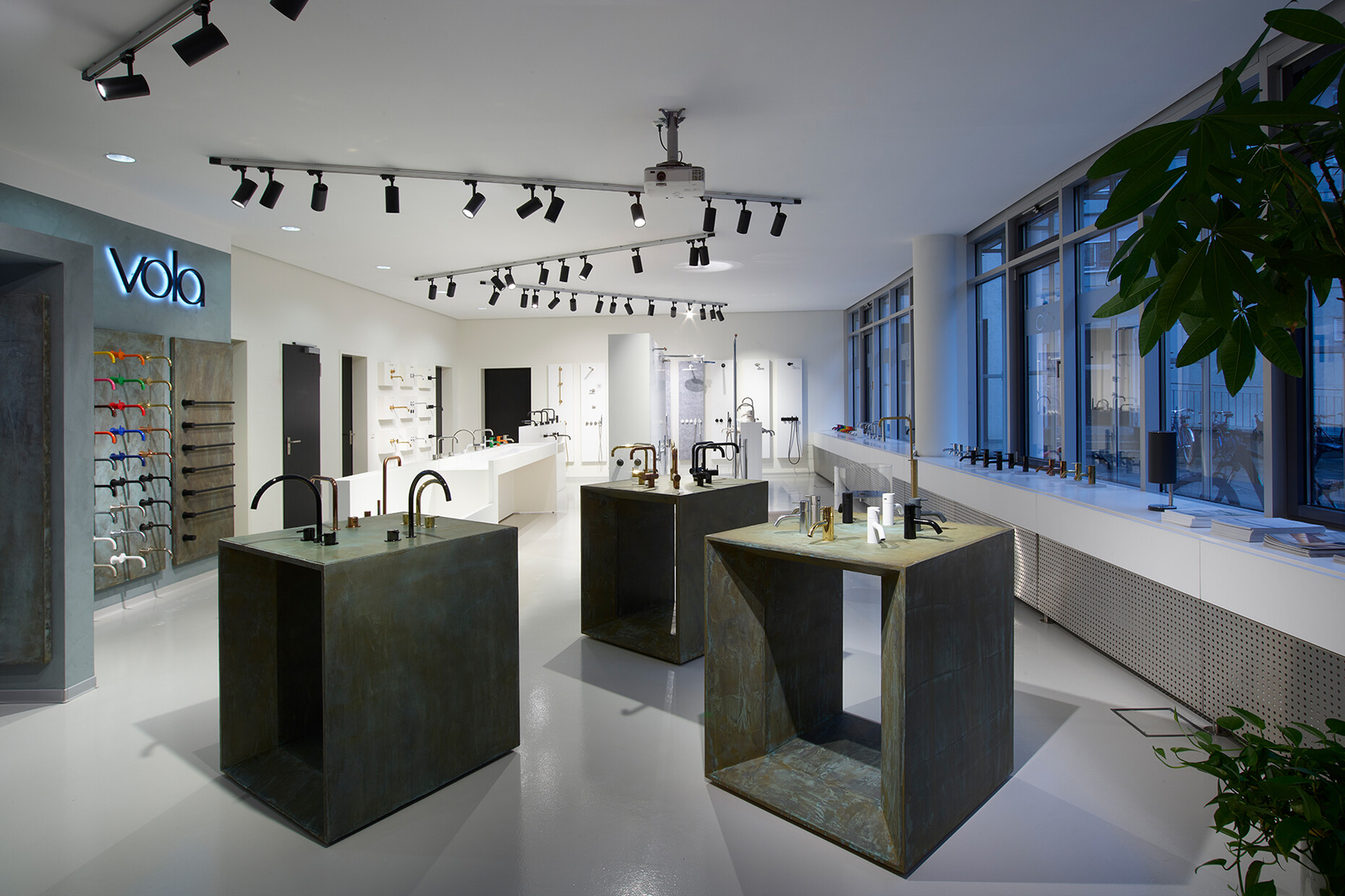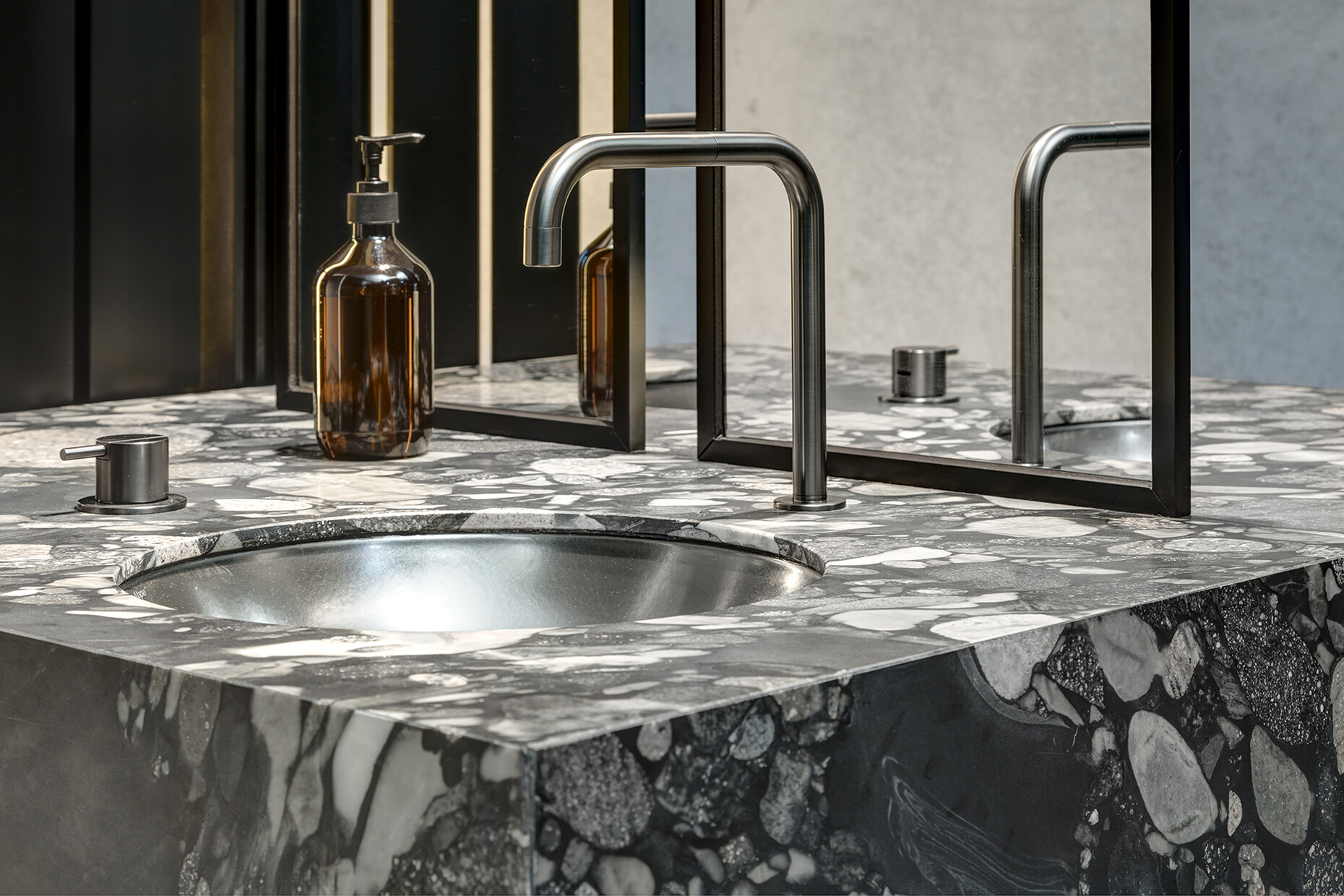Featured
"We don’t make any promises we can’t keep"
Anna Moldenhauer: How is Vola perceived in Germany from the perspective of your distribution company? Are there differences compared with Scandinavian countries when it comes to how the brand is perceived?
Gerald Cappek: In Germany we at present have 16 employees who are busy serving all the target groups who are relevant for Vola. The brand came to the German market via the traditional channel of planning architects, interior designers and design-oriented market partners; our local presence dates back to 1976, when the first mixers went on offer in Germany. There is a much higher affinity to Vola in Denmark than in Germany, and typically the attitude towards the brand in the Nordic countries has been decidedly positive. However, the German branch of Vola GmbH has brought us closer together and today Germany is the most important export market worldwide for the parent company. Stylistically, we are in the tradition of the Bauhaus era. The combination of aesthetics and function is key to Vola. We have also noticed that German consumers have moved away from the former “stinginess is cool” mindset and are once again focusing on proven values and products. They favor products that can be used for generations like the Vola mixers.
The showroom in Munich was completely redesigned this year. What’s the concept?
Gerald Cappek: At the moment it is particularly important for us to rethink the issue of longevity, i.e., what materials are used for our products? How good is our production materials cycle? This goes right down to the details – for example, what happens to the woodchips that accumulate during production? We demonstrate all the different workflows clearly in the showroom. We also have three different shower systems in operation to familiarize clients with them, along with the entire range of 27 colors. The mixers can be tested with different pressure flow rates, which is especially important for projects such as hotels or public areas. We provide information on the subject of saving resources and visitors can test the touch-free Vola mixers. Essentially, the showroom gives visitors a complete overview of our product range.
So, communication in the showroom is designed to be interactive?
Gerald Cappek: Precisely. The showroom is open to all our target groups, meaning everyone from architects to end consumers. In addition to the theory, the tactile experience of the mixers, their ease of use and their functionality are very important, as is experiencing the temperature of the towel warmer. It’s about making the product benefits tangible beyond the design.
Vola is a traditional brand whose history is closely connected to that iconic designer Arne Jacobsen. Nonetheless, today companies are expected to keep their fingers on the pulse of things, especially as regards sustainability. How do you ensure that both aspects are given sufficient consideration?
Gerald Cappek: Vola’s guiding principle is continuity. Next year the brand will be 56 years old. Essentially, formally speaking the entire series has remained unchanged and is still based on the original design by Arne Jacobsen. Naturally, over the course of five decades all kinds of technical changes have been made as required by the market: Vola has to comply with the German industrial norms and standards as regards material quality standards and also meet all the building regulations. We might bring innovations to the market from time to time but Vola’s philosophy is only to develop products for which there is a real need. We do not slavishly follow short-lived trends or feel obliged to present a new product or small series every year. For us, sustainability also means product benefits, longevity, or reparability. Our customers can still order spare parts for mixers dating back to 1968. We’re in a position to do that thanks to the high quality of the products and the company’s loyalty to its customers. These are decisive factors in continuing to promote the brand on the market.
To what extent is production at Vola sustainable?
Gerald Cappek: Production is certified in line with the ISO 14001 standard for international environmental management system and our materials such as stainless steel and brand are recyclable. For example, the brass shower heads are made from a 600-kilogram brass rod and each weigh two kilograms. The material that is cut off during the production procedure is re-inputted into the cycle. We also keep the water in the production cycle. One of our goals is to achieve carbon-neutral manufacturing by the year 2030. To this end, we don’t manufacture “for stock”, but to order. We can map the entire lifecycle of a product through to recycling in the environmental product declaration. These declarations are certified by independent institutes because there is an increasing demand for them from developers and planners. What we don’t publish, however, is a sustainability report because the word sustainability is not used in the company. Instead we talk about longevity and environmental protection. “Sustainability” is a term that can no longer be precisely defined. We don’t make any promises we can’t keep.
Why does Vola still solely field the designs of Arne Jacobsen, who died in 1971?
Gerald Cappek: Arne Jacobsen’s design is characterized by perfect proportions. His designs are based on the unity of the individual parts and the Golden Section. The combination of circle and rectangle, the carefully balanced material thicknesses, and the curve radii are all components whose interplay creates a perfect form. There is nothing to improve. If a company can integrate the same classic, purist design into all manner of projects over a period of five decades then that is simply a quality that no will ever want to pass up. If we were to alter the design, we would no longer be authentic. Our new developments, and there have been 15 products in the last ten years, were all based on the design DNA of Arne Jacobsen. The fact that all our innovations have been awarded design prizes demonstrates the success of this consistent approach.
You have helped drive Vola for 40 years – what to your mind defines the company?
Gerald Cappek: Above all, the people I work with and the general conditions. I have always been able to communicate very openly with the executive board. When you work for Vola, you have reached the pinnacle of what is possible when it comes to mixers. Nor is it difficult to be enthusiastic about a brand that you have been able to experience consistently for decades and that also gives us in Germany the freedom to manage distribution processes independently.
What challenges do you face in the near future?
Gerald Cappek: The biggest challenge is the current situation in the construction industry. Indeed, 2024 will be a major challenge for all market players. The number of new building permits is falling, and many projects have been planned but can’t be realized owing to rising construction costs, the high cost of land, and high interest rates.
What new products can we look forward to?
Gerald Cappek: We are currently working on a new catalog in which we have focused on combinations of mixers that we have already installed in properties, but which are not widely known. We want to offer new inspiration for project planning. Simultaneously, we are working on a kitchen mixer that will probably be launched on the market at the beginning of 2025 and will offer a variety of functions. New sanitary mixers are not currently on the agenda, but we will come back to them when the need arises. Vola will not put a product on the market simply to have something new out there. Instead, we are constantly working on improving our products technically, and continuity is also a priority here.
Are trade fairs still of interest to you at present?
Gerald Cappek: We don’t have very high expectations of most trade fairs right now – if the number of visitors decreases, so will the number of new contacts for us. The effort involved must be reasonably proportionate to the benefit. One event we do still like to participate in is Architect@Work, as the underlying idea of “speed dating” with interesting people from the market is always a good way of making contacts and the outlays involved are not too great. Many manufacturers are now rethinking their presentation concepts partly because of the economic situation. If the big brands don’t exhibit at trade fairs the number of visitors will drop. In my opinion, the concept should be more holistic and also include more services for consumers, for example by offering more advice.


























































































